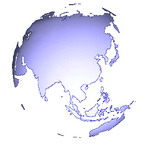Kuala Lumpur's Colonial Influences





Kuala Lumpur's story dates back to the 1820's when Malays, mainly Sumatrans crossed the Straits of Melaka to conquer the thick virgin jungle in search of a new life. They paddled up the Klang River and settled on the upper reaches of the river. We hear of such early Malay settlements in areas like Petaling about 17km from the city centre and a village called Kampung Haji Abdullah Hukum close to Jalan Bangsar about 12km from the city centre. These early settlers supplemented their meagre earnings from paddy and panning for tin at streams nearby. Raja Abdullah, the Malay Chief governing almost the entire Klang Valley at the time had been eyeing for a part of the small but profitable income the villagers received from panning tin in the rivers. In 1857 he made a shrewd decision to send a party of 87 Chinese miners upriver from Klang to prospect for tin in the upper valley. It took them 3 days of river travel during the rainy season to get to Kuala Lumpur. If attempted during the dry season, the journey would have taken 10 to 15 days, with many occasions dragging boats over sandbanks or shallow waters. The miners and labourers disembarked and continued on foot to their destination from the confluence of Klang River and Gombak River where the water was too shallow to continue by boat. The going was tough - the intrepid travellers waded waist deep in swampy waters and were constantly tormented by mosquitoes and leeches. They headed towards the east to prospect at Ampang, which was reported to be rich in tin deposits. Being in unfamiliar territories, the head of the group engaged the expertise of a local magician or 'pawang' as known in Malay, to locate areas for mining. The pawang was thought to have favourable connections with the spirits of the jungle and was also very familiar with the terrain in the area. Once an area was located, a fee was further negotiated with the pawang for his consultation on ways to appease the local spirits to ensure that their progress in the area would not be hindered. However, things weren't as easy as they thought it to be. Clearing the jungle around the mine brought an epidemic that killed many of the miners. Mosquitoes began to breed in large numbers, bringing with them malaria. Within the year, only 18 of the 87 miners survived. Yet upon hearing of the riches to be found here, more immigrants were sent to replace the fallen and soon a bustling trade bloomed. The Klang-Gombak junction, close to where Masjid Jamek is now situated, was the point for loading tin ingots and unloading of food supplies, weapons, shovels, pans, and more immigrants to man the mines. Persuaded by a local Malay chief, two pioneer Chinese traders of Hakka descent, Hiu Siew and Ah Sze set up their sundry shop at the confluence. Some regard these 2 traders as founders of KL others lean towards Raja Abdullah. The shop was strategically located on the right hand side of the Klang River facing upstream, to catch the miners before they made their way up the jungle tracks to the various mining areas. It is not clear how the name Kuala Lumpur came about. Theories abound. 'Kuala' means estuary or confluence and in Malay usage, the name of the river or tributary that ends at this point should follow. Which means that this place should have been named Kuala Gombak but it wasn't. 'Lumpur' which means 'mud' could have been chosen because of the condition of the river. Another theory was that there used to be a tributary called Sungei Lumpur, which joined with the Gombak River just before the confluence. One thing is for sure.the significance of these waterways, the lifelines of a land can not be understated. The rivers gave Kuala Lumpur life and helped nurture the town from a mere seedling to a bustling Metropolis. It's unfortunate that by nature of development, rivers that had once been the epicentre of a growing township are now reduced to mere aesthetic swatches in this canvas of modernity. (And to some- just a large sewage system!)



No comments:
Post a Comment